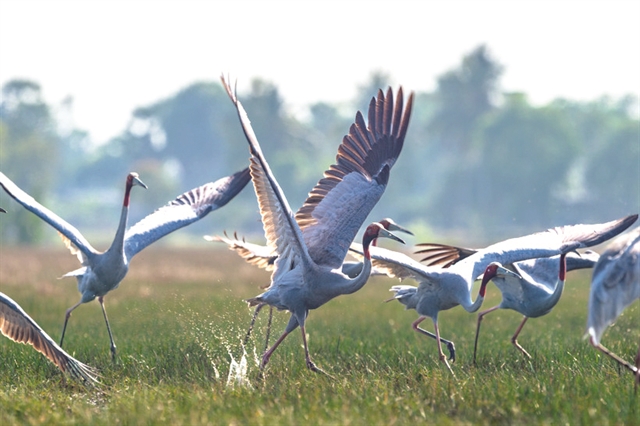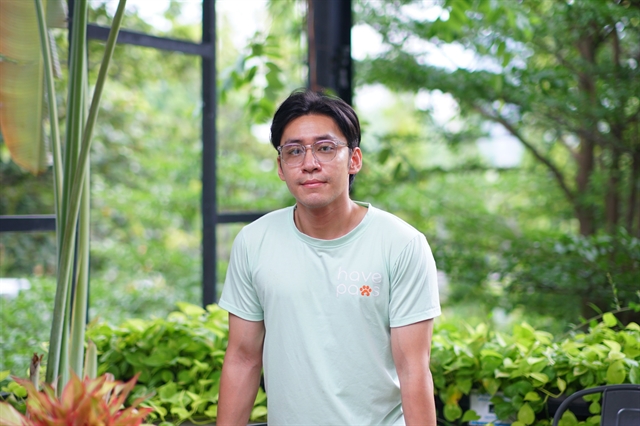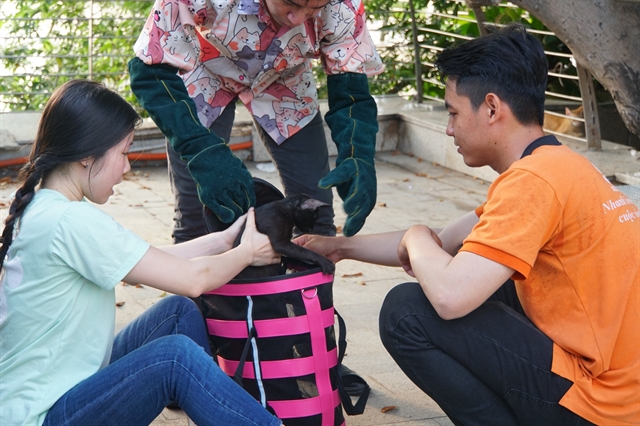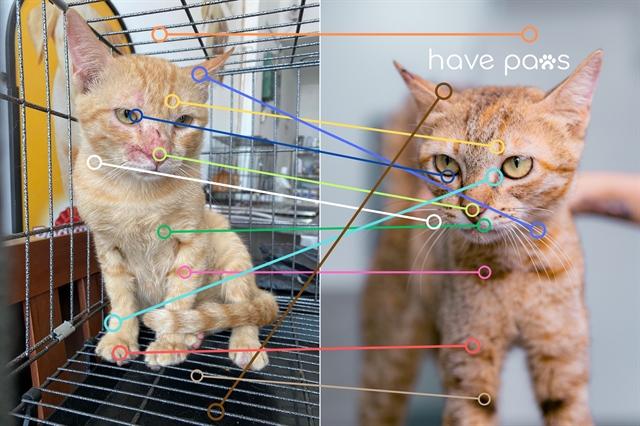 Inner Sanctum
Inner Sanctum

 |
| Lê Nhật Long is the founder of HavePaws, a social project for animal welfare. Photo courtesy of HavePaws. |
Lê Nhật Long, 27, is the CEO of HAVE (Humanity Alliance of Vanguard Engineers) Co., Ltd., a legal non-profit social enterprise that brings engineering and technology applications to solve pressing social issues in Việt Nam. HAVE was successfully registered as a non-profit social enterprise in June 2022.
HavePaws is an animal welfare project that applies the TNR (Trap - Neuter - Rehome/Release) method to prevent overpopulation of stray cats, and is also working on an app to reconnect lost pets with their owners.
Long shared with Việt Nam News about the journey of HavePaws and its future plans for tackling other social matters in the country.
Inner Sanctum: How was HavePaws established, and how long has your team been running this project?
Working in the field of information technology, I always wanted to run an organisation adopting technology to alleviate social problems in Việt Nam. During the start of 2022, I gathered all my will and started reaching out to my friends and acquaintances to build up HAVE.
The first problem I addressed was dog and cat meat consumption in Việt Nam. Though this long-standing problem has plagued many Asian countries, what exacerbates it in Việt Nam is that places selling dog and cat meat get their supply from pet theft. There also have not been any specifically designed tools or apps to connect owners with their lost pets and assist them in pet care.
So the HavePaws project was kicked off, beginning with a mobile app under the same name. Then we decided to expand the project towards social practices. Since the beginning of this year, we have been working on a TNR project named “Quý Mão Campaign” aiming to end overpopulation among stray cats in the country.
Inner Sanctum: Can you share more about the process of your project? How do you find stray cats, how does your neutering process work, and are there any challenges?
I think it is necessary to clarify that HavePaws is not an animal rescue centre. Due to limitations in resources, we have yet to be able to foster stray animals.
Instead, we are in charge of catching and performing neutering on feral cats in specific neighbourhoods in the city. HavePaws connects with locals to have clear information on stray cats and kittens in the area, such as their population, overall health status, and living conditions. Then we will evaluate and prioritise locations that are more in need.
Feral cats in each area will be health-checked to see if they are ready to be neutered. We also take care of them post-neutering by connecting with multiple foster homes while looking for adopters. However, if it is impossible for us to find one, we will have to return them to the area they came from.
As there are many stages in the process, it is challenging for us to lay out tactics for different cases and design a unique approach to each area. Lack of human resources also makes it hard to operate fully. The process is demanding since stray cats need to be taken care of before, during, and after neutering.
 |
| The TNR (Trap-Neuter-Return) programme is part of the HavePaws project, aiming to end overpopulation of feral cats. Photo courtesy of HavePaws. |
Inner Sanctum: The TNR method has become popular in countries like Singapore. What are the particular benefits it has for cats?
We prefer the TNR method as it is deemed a long-term and sustainable solution for preventing overpopulation among stray animals. Adding to that, the overwhelming number of stray cats in Việt Nam has gone beyond the ability of foster homes and animal shelters.
Hence, neutering stray cats will prevent environmental imbalances from occurring. A large number of stray cats in an area might also be a hurdle for residents due to problems like diseases and other social issues.
This method also brings cats various health benefits, specifically in protecting them from dangerous diseases and increasing their appetite.
It helps improve the health of female cats since their health degrades every time they deliver. The kitten population will also become smaller, preventing them from being malnourished and lacking proper care.
Inner Sanctum: Do you have any protocols or standards for choosing adopters for the cats?
Adopters are required to contact us directly to go through the adoption process to increase transparency amongst parties. HavePaws has established protocols and non-negotiable standards for reviewing profiles, such as personal income and living environment, to ensure cats live full and healthy lives.
This will also be a feature in our upcoming app to expand the reach of adopters.
Inner Sanctum: Please go into detail about how your app, HavePaws, operates. What can users expect from using the app? Has your team encountered any difficulties in the process?
Our app's main feature is to reconnect owners with their lost cats or dogs. It uses AI (artificial intelligence) to recognise and automatically match images of lost dogs and cats with reports from owners.
The usual methods for finding missing pets include handing out flyers or cross-posting on social media sites. But lots of posts on these sites limit the chances for finders and owners to connect. Until now, there have not been any specifically designed tools to connect pet owners and finders in a shorter timespan, so HavePaws was developed to solve this problem.
There will also be other features, such as a map showing pet stores and services and a standardised process to review adopters’ profiles.
HavePaws mobile app was meant to be launched around July last year, but was postponed due to several problems.
As a non-profit organisation, HavePaws had limited resources and needed to find donors and sponsors to build the app. Coupled with that, staff shortages and a lack of commitment really hindered our progress.
Fortunately, we have reconstructed our work frame and are now in the final stages of launching the app at the end of this year.
After launching, there will be promotion campaigns on social media sites to reach out to more people, apart from pet owners.
 |
| HavePaws mobile app uses AI to match physical features of lost dogs or cats with found reports, reconnecting owners with their pets in a shorter timespan. Photo courtesy of HavePaws |
Inner Sanctum: Can you share about your future projects? Do you have any plans on expanding your scope of work?
We are now focusing on finalising our app. More adjustments will be made post-launch to optimise all features and ensure a great user experience.
We also plan to expand our TNR project scope by building a standard TNR process for volunteers to apply in areas where we have limited access.
In one to two years, we hope to carry out our TNR project on feral dogs. Neutering stray dogs is relatively more demanding, so we need to lay out proper plans and search for donors and volunteers.
Aside from that, we will deploy multiple projects aiming to raise awareness among Vietnamese people about animal welfare and other social issues. VNS




